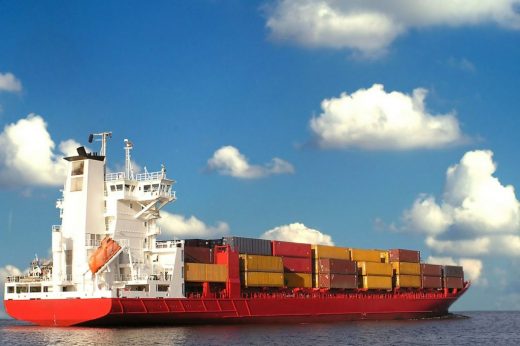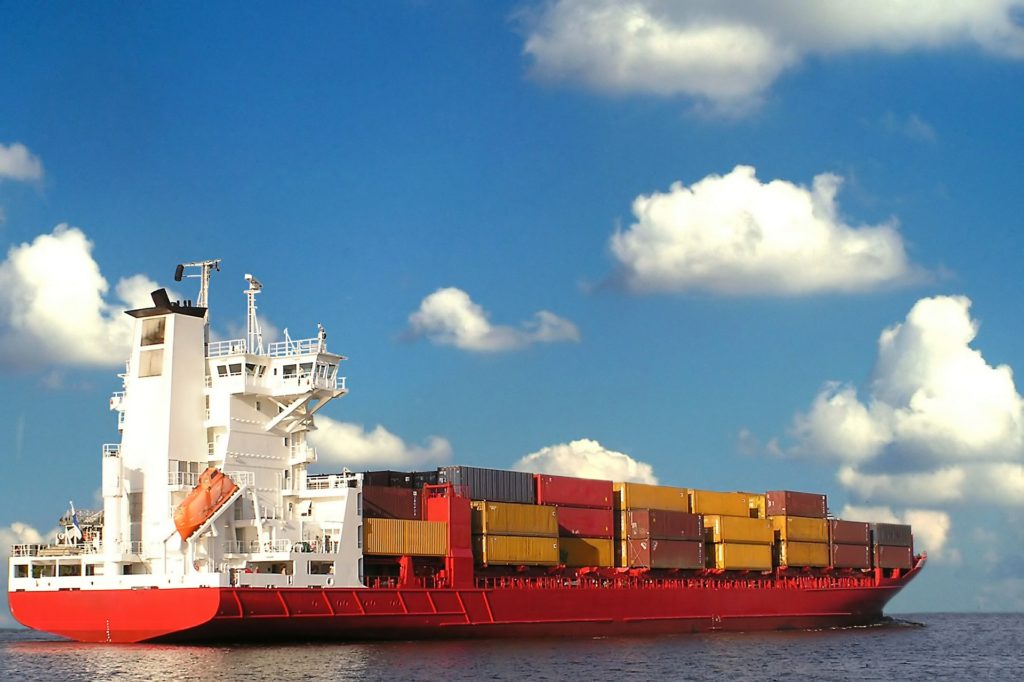Can the blockchain and IoT solve international freight’s issues?
Can the blockchain and IoT solve international freight’s issues?

It’s become well established that the blockchain has an almost infinite range of functional applications outside of pure financial transactions. This is particularly pertinent when it comes to the Internet of Things where technology is being used to disrupt a range of traditional industries.
One example is cargo freight, an industry traditionally reliant on paperwork — typically in triplicate — including the physical couriering of documents as proof of purchase. As well as being incredibly wasteful such a process caused problems in document authentication, payments, time delays and couriering not the mention the risk of losing of physical documents.
See also: Will blockchain drive the fourth industrial revolution?
One team has found a novel way to address these inefficiencies and authenticity challenges through the blockchain. In January Dominik Schiener and his team won first prize at the Shanghai Blockchain Hackathon for their project Cargochain. We saw their work recently here in Berlin where they won the silver medal at the GTEC Blockchain Innovation Awards and I met with Dominik to learn more about it.
ReadWrite: How did your interest in the block chain and IoT come about?
Dominik Schiener: Like with most people, it started in 2012 when I first heard and read about Bitcoin. The concept behind Bitcoin intrigued me and I wanted to get involved. I started out with mining but then moved on to create my own startups in Switzerland and the UK. For the past year I’ve been mainly focusing on smart cities and how to combine Blockchain and IoT to create new, decentralized platforms that can spawn powerful applications. For me, smart cities consist of two core elements: participatory innovations and Internet of Things. Both of these can be enabled through blockchain and it’s what we’re working on.

RW: Can you describe IOTA? What do you see as its main applications?
DS: IOTA is a distributed ledger that can be used for transactional settlements as well as data transfers. Because of the properties of IOTA — namely, its scalability, lightweight-ness and lack of transaction fees – it’s the perfect solution for the Internet of Things. We see IOTA as an enabler and the backbone of the “Machine Economy,” as it enables all of these new machine interactions that were previously impossible. Not only can machines pay each other for the first time, but they can also communicate with each other and transmit data securely through a distributed ledger.
RW: The blockchain is commonly criticized for being slow and costly, especially with examples like the bitcoin blockchain, and counter to typical scalable database technologies. How does IOTA differ from this or respond to these issues?
DS: The main technological innovation of IOTA is the Tangle, which is a completely new Blockchain design that gets rid of the blocks and introduces a Directed Acyclic Graph (DAG) (NOTE: you can read the whitepaper on this technology at http://iotatoken.com/IOTA_Whitepaper.pdf). The way the Tangle achieves consensus is entirely self-regulating. This means that consensus is no longer decoupled as with today’s blockchains. Because of this, IOTA is scalable, it is no longer limited to 10-minute block times and most notably, there are no transaction fees. This makes IOTA a perfect solution for machine-to-machine interactions that need to be able to send tiny nano-payments to pay each other for certain services.
In addition to this, IOTA is also quantum proof. This makes IOTA the first quantum proof distributed ledger in this space – which by itself, is an extraordinary technological achievement. IOTA all-around introduces novel new concepts to the space and it is arguably the most innovative project in this space since Ethereum.
RW: Where did the idea for CargoChain come from? Who is behind the project and what stage is it at?
DS: The initial concept behind CargoChain was initiated about six months ago, when I was researching what I wanted to develop for the Shanghai Blockchain Hackathon. As is nearly always the case in the blockchain space, you’re looking from an outsider’s perspective to figure out where blockchain can be applied to. So it was really about finding an existing problem that can be solved through blockchain.
The interesting thing about international trade is that the more I read into it, the more I realized how vastly outdated the industry really is and how, through blockchain and IoT, we can have a serious impact to improve it from the ground up.
Since then — I ended up winning the Shanghai Blockchain Hackathon with this concept — we have been working more deliberately on how to combine IoT and blockchain and create a new platform for international trade. We also won the Technology Challenge of the Emirates National Bank of Dubai in April and last month we placed second at GTEC. Right now, we’re on-boarding partners to trial our first “proof of concept” this summer.
See also: Flexport takes on freight world
RW: Industries like shipping and manufacturing are quite traditional, not to mention fond of paper trails. How will you sell the concepts of CargoChain to them?
DS: It’s really about creating a product that is ten times better than what is currently being offered. Our initial strategy is focused on collaborating with larger corporations to run proof -of-concepts with their supply chains so that we gain hands-on insight and also recognition. Our product development is very iterative, and we want our product to be really shaped by the industry so that we can create something that solves problems for all of the stakeholders involved in the trade right now.
RW: What’s next for you?
DS: Right now our main focus is on IOTA, since it’s a foundational element of many of the products we have in mind, including CargoChain. IOTA will launch within a month and we intend to establish an entire new ecosystem for IoT and Blockchain use cases through IOTA. We’re quite excited about that and hope to get more startups and corporations involved in shaping this ecosystem. For CargoChain, we intend to run a public proof-of-concept running by Summer.
The post Can the blockchain and IoT solve international freight’s issues? appeared first on ReadWrite.
(48)



